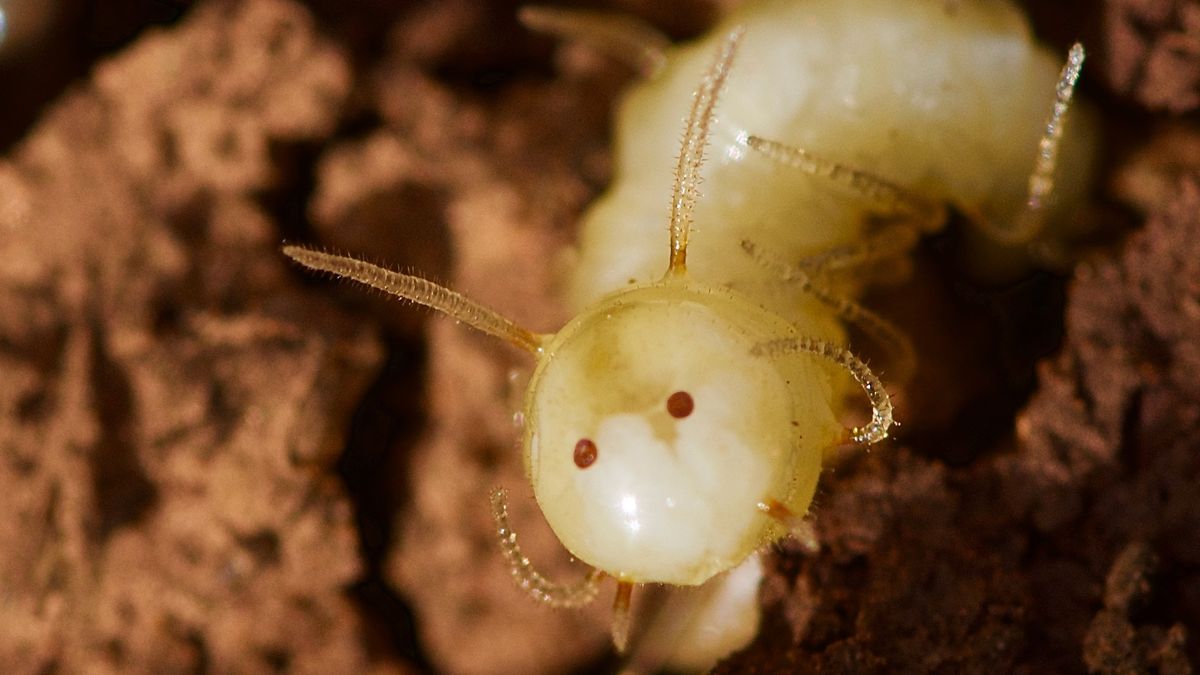
New research has revealed that mountain fly maggots have developed fake faces on their hind ends as an ingenious tactic to blend into termite colonies.
Scientists discovered these faux faces—resembling the heads of termites—on the rear of an unidentified blow fly larva residing in the mountainous regions of Morocco. This remarkable adaptation is a sophisticated mimicry strategy that deceives harvester termites (Anacanthotermes ochraceus) into believing that the fly larvae are members of their own colony.
Typically, soldier termites are quick to eliminate intruders, but these cleverly disguised larvae are able to coexist peacefully among them and have free access to the colony’s food reserves. The study, published on February 10 in the journal Current Biology, even indicates that termites have been observed grooming these deceiving larvae.
The researchers stumbled upon these two-faced larvae while searching for ants in the Anti-Atlas mountain range of southern Morocco. Lifting a stone, they uncovered a termite mound harboring three of the previously undocumented fly larvae. Study lead author Roger Vila, a researcher at the Institute of Evolutionary Biology in Spain, commented in a statement.
“This species must be extremely rare; we’ve conducted several more expeditions in the area and, despite searching through hundreds of stones, only found two additional flies, which were located together in another termite mound,” Vila explained.
Related: Kamikaze termites self-destruct using ‘explosive’ packs — and scientists have just discovered how
Termite nests serve as protected sanctuaries filled with food, making them prime targets for species that can successfully infiltrate. The strategy employed by the fly larvae is one of social assimilation, necessitating significant changes in their physical characteristics, behavior, and biology, as the research indicates.
The researchers collected samples of these cleverly camouflaged fly larvae and the associated termites, taking them back to their laboratory for additional examination. They identified numerous extreme adaptations, such as modified breathing pores that mimic termite eyes and unique sensory structures known as papillae that resemble termite antennae.
Chemical Mimicry
Additionally, the larvae have developed scent compounds that align with the specific odors of the termites. Vila noted that upon examining the chemical makeup of the larvae, researchers found it indistinguishable from that of the termites in their colony.
“They have the same exact scent,” Vila stated. “Moreover, the larvae and termites within the same colony exhibit minor differences in their chemical profiles that help them stand apart from other colonies. This specific scent is crucial for establishing interactions and thriving within the termite community; it serves as a chemical disguise.”
The larvae belong to the fly genus Rhyncomya, and the team suspects they represent a new species, as no other flies in this genus exhibit such mimicry. Unfortunately, the researchers were unable to rear the larvae to adulthood in the lab, as all specimens perished before maturing.
Vila suggested that certain aspects of the termites’ nest environment and the nature of their relationship might not have been effectively replicated in the laboratory setting.
“Their dietary needs remain unknown, and their adult form is still a mystery,” Vila added.









